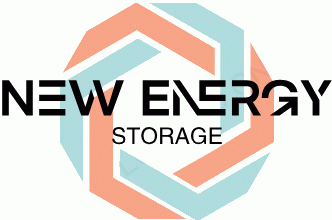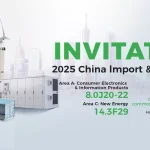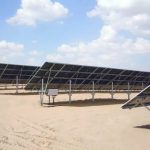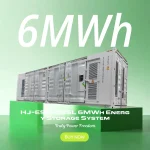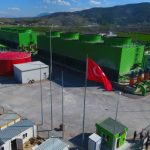Since Iran has long been grappling with increasing grid stability concerns in the midst of increasing demand and shifting energy trends, new energy storage technologies have proven to be the panacea. Of these, container energy storage systems are becoming the real solution to ensuring grid reliability and supporting the growth of renewables. With the help of sophisticated renewable energy technology in the guise of utilization of lithium batteries in container systems, Iran can eliminate its grid stability problems as it introduces a new era of clean energy.
The Container Energy Storage role in Iran
Container Energy Storage units consist of batteries, inverters, and controls all in a modular container. The systems have some advantages:
- Modularity and Scalability: They are modular in nature and can be installed and expanded according to the energy requirement.
- Rapid Deployment: As they are containerized, they can be deployed rapidly and are most suitable to solve short-term grid stability problems.
- Flexibility: They can be easily integrated with any renewable energy project and can be applied in urban as well as rural regions.
- Protection and Efficiency: They protect valuable commodities such as lithium batteries from the harshness of the environment, providing assured performance.
For Iran, with growing energy demands and more renewables projects in the pipeline, these systems provide a great backup and balancing solution in the best interests of overall grid stability.
Advanced Renewable Energy Technology and Its Integration
Iran’s energy transition strategy entails the use of Renewable Energy Technology for minimizing the use of fossil fuel. Use of renewable energy technologies such as sun power and wind power entails the use of efficient energy storage devices in an attempt to overcome intermittency.
- Lithium Batteries: Lithium batteries’ long life and high energy density make them the central element of the majority of container-based energy storage devices. They enable effective storage of energy and withdrawal at rate when needed.
- Energy Management Systems (EMS): Advanced EMS controls and regulates the flow of energy, enabling energy stored to be used as effectively as possible.
- Converters and Inverters: They convert stored direct current (DC) from the battery into supplyable alternating current (AC) to the grid and make it easy to integrate energy.
They not only enhance the efficiency of energy storage but also system reliability and overall resilience when installed in a containerized setup.
Iran’s Grid Stability Issues
Iran’s grid stability issues are resultant of the below factors:
- Variating Demand: Day-night and seasonal variations in demand for electricity cause grid instability.
- Issues of Integrating Renewables: The intermittency of renewable sources such as solar and wind energy might possibly result in supply shortfalls.
- Infrastructure Constraints: Aging infrastructure of the grid as well as limited storage capacity of energy are also resulting in reliability concerns.
Container-based energy storage systems such as batteries offer a practical solution for such concerns by:
- Excess Energy Storage: Excess renewable energy is stored and dispatched in periods of high demand.
- Facilitating Rapid Response: Rapid deployment and dispatchability facilitate the grid to respond in scenarios involving sudden rises or falls in supply of energy.
- providing Flexibility: Modular systems housed in containers can be readily fitted into existing grid systems and expanded as and when needed.
Advantages of Having Container Energy Storage Placed in Iran
Deployment of container-based energy storage systems can be greatly beneficial to the Iranian energy sector:
Enhanced Grid Resilience
- Stabilization: Container units supply grid stabilization to provide balance between power generation and consumption.
- Backup Power: They provide backup power during a power blackout or low-intensity renewable generation.
Enhanced Renewable Interconnection
- Storage Efficiency: Energy management system and efficient lithium batteries maximize the interconnection of renewable energy.
- Less Wastage: Excess energy is saved effectively and not wasted, thus making the system efficient as a whole.
Economic and Environmental Impact
- Cost Savings: Energy optimization and reduced consumption of fossil fuels make the systems cost-effective.
- Sustainability: Higher penetration of renewables means lower carbon footprint and cleaner world.
- Scalability: Container systems are modular and hence provide incremental investment and hence economically viable for any deployment size.
Overcoming Market Challenges
Apart from their profitability, energy storage systems through containers also have certain market-related issues in Iran:
- High Initial Cost: New storages are very costly to implement.
- It becomes difficult to integrate new storages into the traditional grid structure.
- Regulatory Barriers: It can stifle deployment through mandates in adhering to the environment.
- Supply Chain Constraints: Worldwide supply chain dynamics can influence the cost and availability of critical components such as lithium batteries.
- Strategic investment, policy action, and interagency coordination among government, private sector, and foreign suppliers must react to these threats.
Best Practices in Container Energy Storage
Compliance with best practices in container energy storage is necessary to achieve maximum system performance and grid stability in the long term:
1. System Design and Customization
- Custom Solutions: Design the storage systems to suit the local energy demand profile.
- Modular Design: Implement modular container systems with simple scalability and in combination with renewable power sources.
2. Regular Maintenance and Monitoring
- Scheduled Maintenance: Implement scheduled maintenance procedures to inspect and service lithium batteries and other components of the system.
- Real-Time Monitoring: Implement advanced EMS for system monitoring and self-correcting faults automatically.
3. Smart Integration with Renewable Projects
- Seamless Integration: Design energy storage systems in a container form that can be seamlessly integrated into solar PV systems and other renewables.
- Data-Driven Optimization: Use data analytics and IoT systems to optimize energy storage and dispatch.
4. Collaborative Approach
- Partnerships: Establish partnerships between local and international suppliers to access new technology.
- Policy Support: Invite regulatory authorities to reduce the approval process and provide incentives to renewables at mass-market prices.
With these best practices, Iran can utilize container energy storage to enhance grid reliability, optimize the utilization of renewable energy, and offer sustainable economic development.
